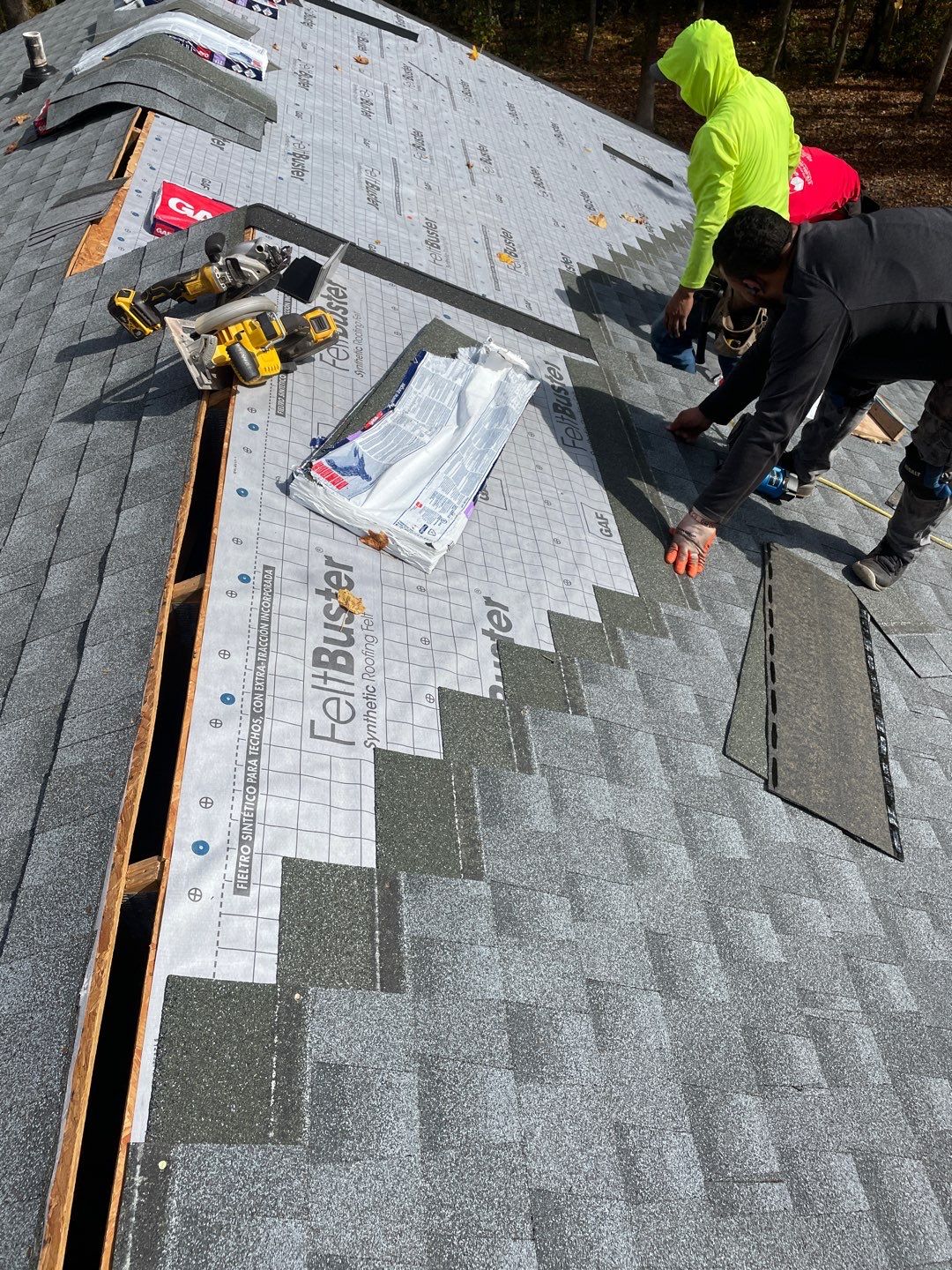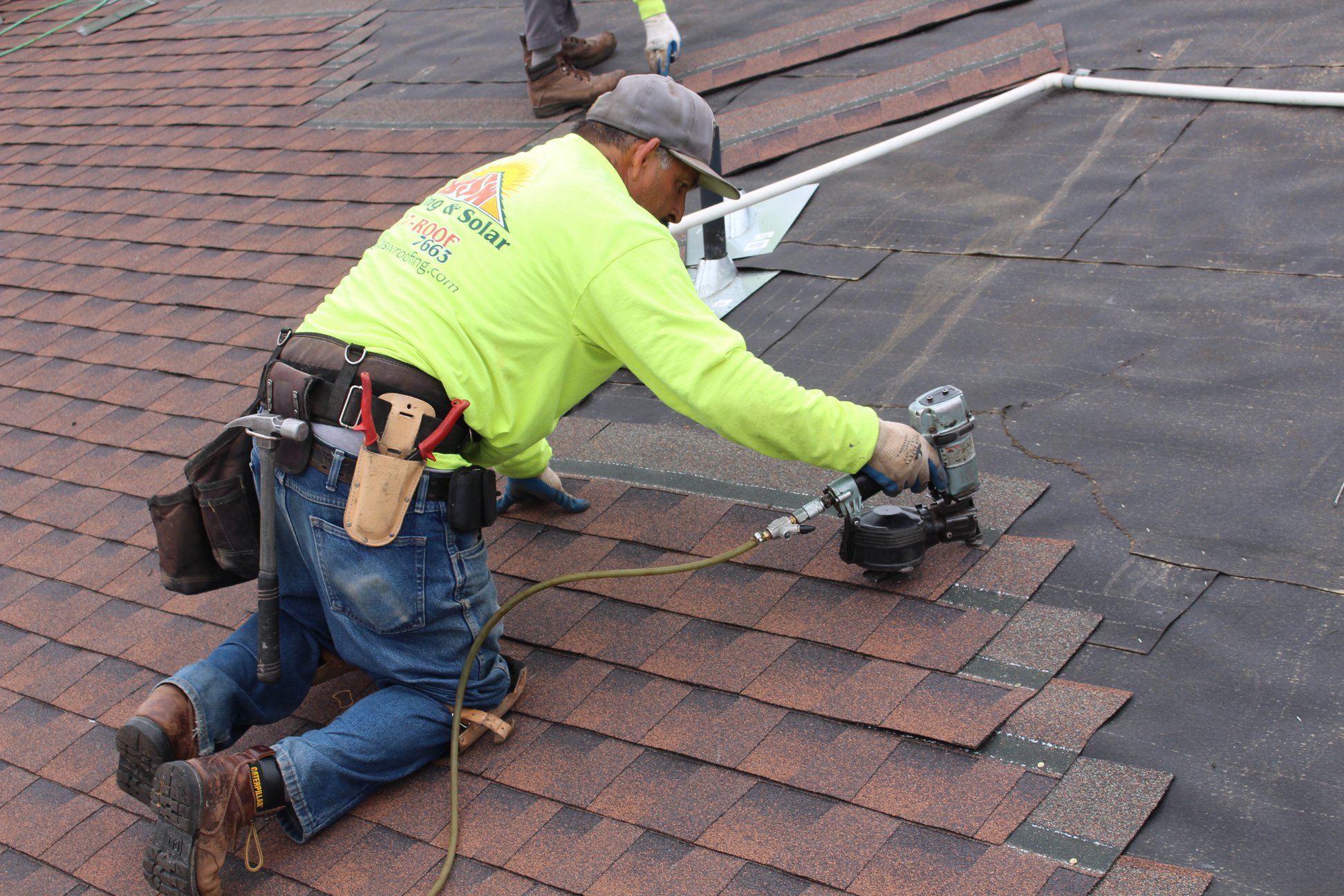A Comprehensive Take A Look At Roofing Companies Gainesville Locals Recommend
A Comprehensive Take A Look At Roofing Companies Gainesville Locals Recommend
Blog Article
Ideal Practices for Ensuring Appropriate Roof Covering Air Flow
Guaranteeing appropriate roof covering ventilation is vital for the longevity and effectiveness of a roofing system. A balanced consumption and exhaust vent proportion, typically 1:300, plays an essential duty, with consumption vents preferably positioned at the reduced side of the roof covering for trendy air access and exhaust vents at the optimal for warm air departure. Regular inspections to recognize clogs and keep clear air movement are critical. Keeping insulation away from vents is essential to protect against air flow constraint. Comprehending these fundamental components establishes the stage for even more in-depth insights right into installment and upkeep practices that can substantially enhance your roof's efficiency.
Understand Ventilation Essentials
Correctly comprehending ventilation essentials is essential for making sure the durability and efficiency of roof. Efficient air flow alleviates dampness buildup and temperature extremes in the attic, both of which can lead to significant architectural damage in time. A well-ventilated roof aids in protecting against usual problems such as mold development, wood rot, and ice dams, which can compromise the integrity of the roof covering products and the underlying structures.
The primary goal of ventilation is to assist in the motion of air, permitting a regular exchange in between the outdoor and indoor settings. This equilibrium is achieved through a combination of consumption and exhaust vents that function together to keep optimal airflow. Consumption vents, commonly located along the eaves or soffits, allow fresh air to enter the attic space, while exhaust vents, often located at or near the roofing system ridge, enable warm, humid air to run away.
Trick factors affecting the performance of roof ventilation consist of appropriate placement, appropriate sizing, and making sure that both intake and exhaust vents are unblocked. Routine evaluation and upkeep are essential to determine potential clogs, damages, or inadequacies in the ventilation system, thereby guarding the roof covering's efficiency and longevity.
Kinds Of Roof Vents
Roof covering vents play a critical role in preserving effective attic room air flow and, by extension, the total wellness of the roof. Various sorts of roofing system vents are available, each with special advantages customized to particular roof covering needs. Ridge vents, as an example, are set up along the roof's peak, enabling cozy, moist air to leave from the attic room. They use constant air flow and mix perfectly with the roofline, making them both efficient and visually pleasing.

Soffit vents are mounted under the eaves and operate in tandem with roof vents to ensure a balanced consumption and exhaust system. By enabling cooler air to get in from below, soffit vents facilitate the expulsion of warm air with upper vents. Gable vents, situated on the outside wall surfaces of the attic room, deal another efficient service, especially in homes with saddleback roofs.
Analyze Your Existing Air Flow

Next, take into consideration the age and condition of your roof materials and air flow components. Older systems might not adhere to current building ordinance or might have deteriorated gradually, lowering their effectiveness. Conduct an extensive evaluation to determine any kind of indications of deterioration, such as rust, damage, or spaces that can jeopardize the system's efficiency.
Furthermore, gauge the attic temperature level and humidity degrees. Heats and humidity can show inadequate air flow - roofing companies gainesville florida. Utilize a hygrometer and thermostat to obtain exact readings, comparing them with outdoor conditions. Relentless inconsistencies suggest potential issues that need attending to.
Setup Best Practices
Efficient installment of roofing ventilation systems is extremely important for ensuring optimal performance and durability. Appropriate installment starts with understanding the particular air flow demands of the structure and the roof covering it covers. This look these up entails calculating the right ratio of intake to exhaust vents, generally sticking to the 1:300 regulation, which specifies one square foot of air flow for each 300 square feet of attic floor space.

The placement of vents is similarly crucial. Intake vents ought to be mounted at the roofing system's lower edge, usually in the soffits, to enable cool air to go into. Exhaust vents, on the other hand, need to be installed near or at the roofing's top to help with the departure of cozy, wet air. This produces an all-natural air flow that assists maintain temperature and wetness balance within the attic room room.
Seal all air vent links carefully to prevent air leaks and prospective water seepage. Use high-grade materials and follow supplier standards this website to make certain durability and effectiveness. In addition, integrating ridge vents with baffles can substantially improve air movement effectiveness by stopping wind-driven rainfall and snow from entering the attic room.
Inevitably, specific installment of roofing air flow systems alleviates prospective problems such as mold and mildew growth, ice dams, and structural damage, making sure the roof's integrity and the structure's total health.
Routine Maintenance Tips
Consistency in upkeep techniques is essential to ensuring the lasting effectiveness of roof covering ventilation systems. Throughout these evaluations, make certain that vents are cost-free of particles, nests, and other blockages that could impede air flow.
Cleaning the vents is one more necessary task. Make use of a soft brush or a vacuum to get rid of dirt and debris from consumption and exhaust vents. Be cautious not to damage the vent displays or louvers throughout the process. In addition, check the attic area for any kind of indications of water damages, which could endanger the integrity of the roof.
Appropriate insulation is equally crucial. Make certain that attic insulation does not block the vents, as this can seriously limit air movement. If any insulation has changed or worked out, reposition or change it to preserve an effective barrier.
Lastly, replace any harmed or missing out on elements without delay. Damaged vents, broken roof shingles, or worn-out blinking can all contribute to poor air flow and needs to be resolved immediately. Normal upkeep makes sure that the roofing ventilation system works efficiently, consequently prolonging the life-span of the roof covering itself.
Verdict
Making certain appropriate roof covering air flow is paramount for preserving the performance and toughness of a roof system. Adherence to the 1:300 intake and exhaust air vent proportion, combined with the critical placement of vents, is vital.
A well balanced intake and exhaust vent proportion, commonly 1:300, plays an essential role, with intake vents preferably placed at the lower side of the roof covering for trendy air entry and exhaust vents at the height for cozy air exit. Intake vents, typically situated along find this the soffits or eaves, permit fresh air to enter the attic room space, while exhaust vents, often situated at or near the roof covering ridge, allow hot, damp air to get away.
Soffit vents are mounted under the eaves and job in tandem with roof vents to guarantee a well balanced consumption and exhaust system. By permitting cooler air to get in from below, soffit vents facilitate the expulsion of hot air through upper vents. Adherence to the 1:300 intake and exhaust vent ratio, coupled with the tactical placement of vents, is necessary.
Report this page